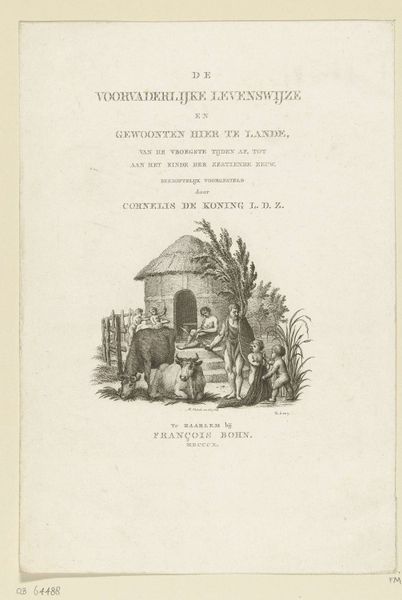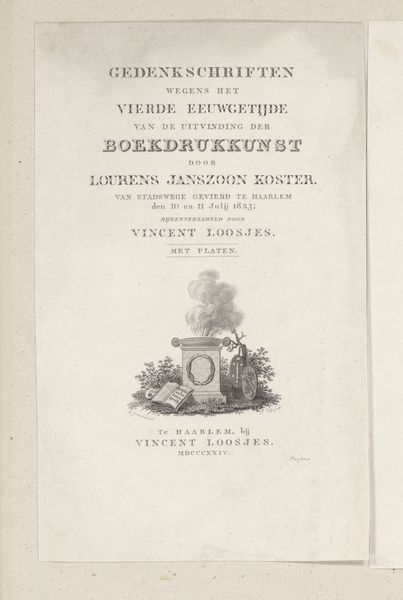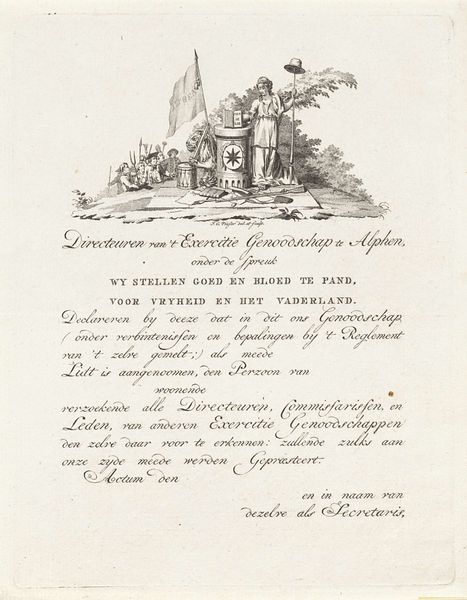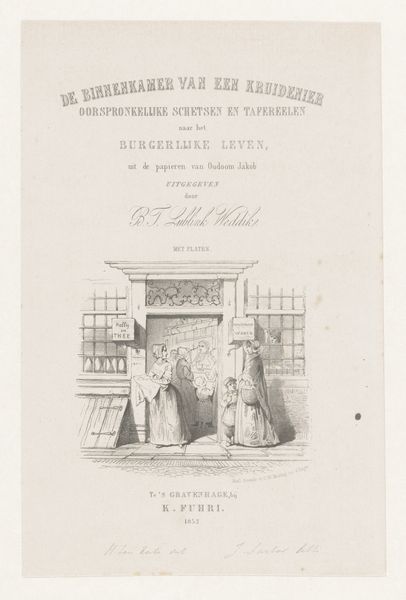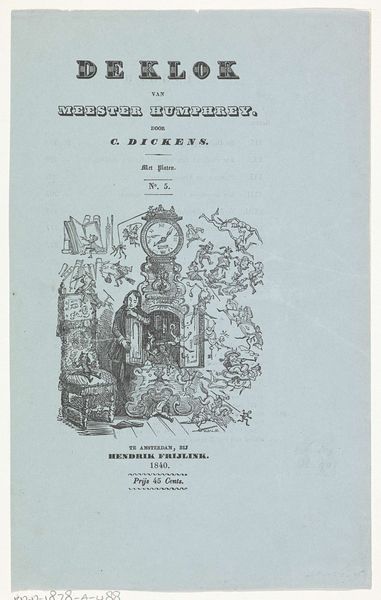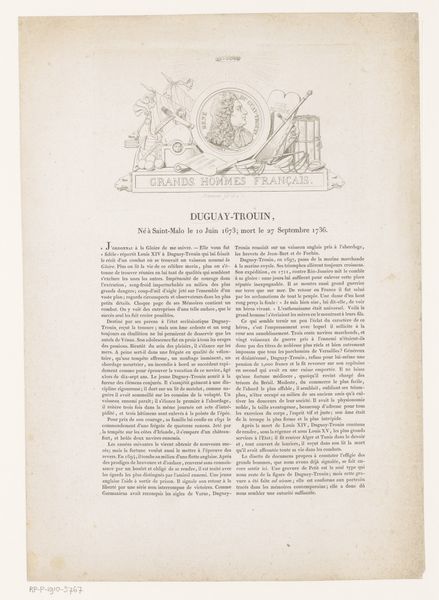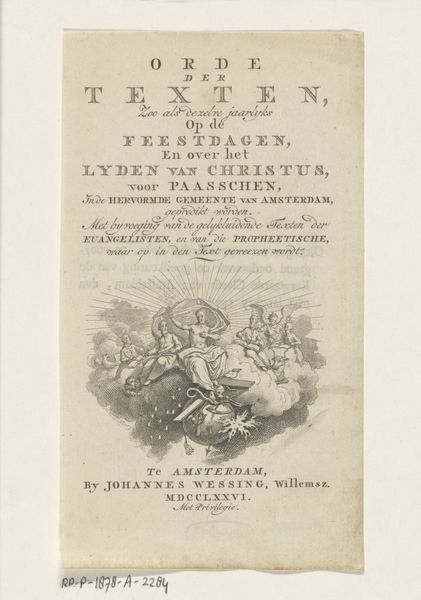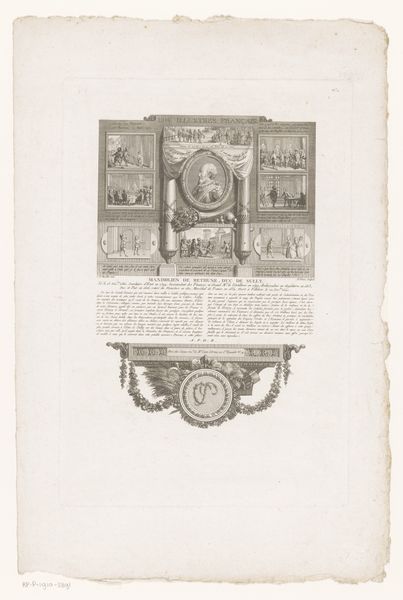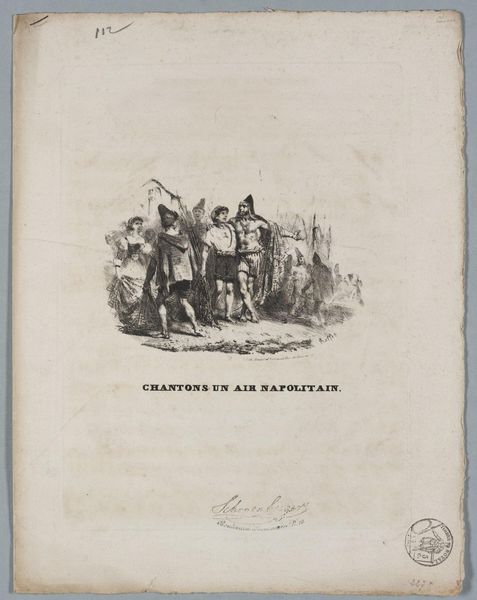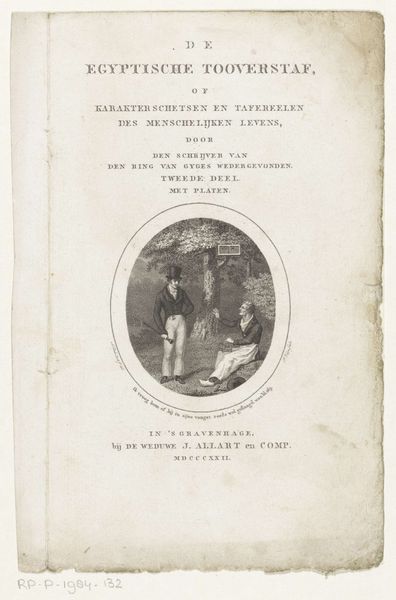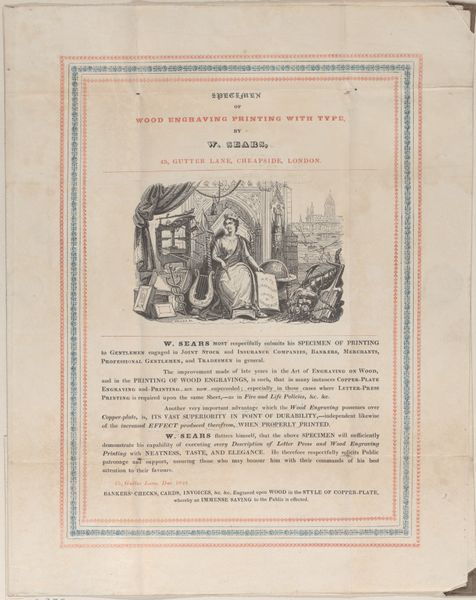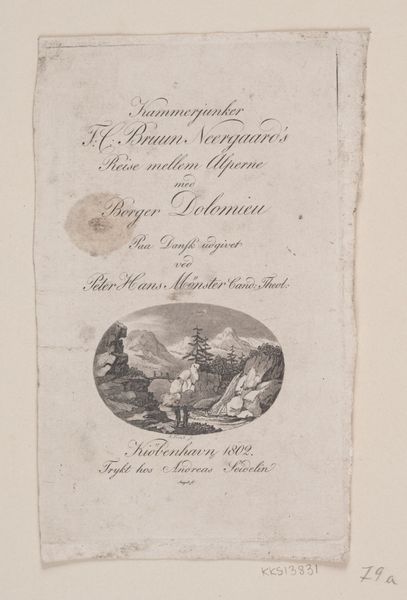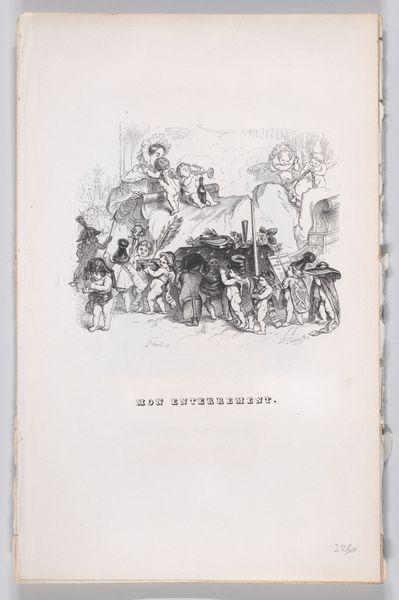
Allegorie op Willem V als beschermheer van de Leidse Academie 1775
0:00
0:00
Dimensions: height 328 mm, width 254 mm
Copyright: Rijks Museum: Open Domain
Curator: This engraving from 1775 by Reinier Vinkeles is entitled "Allegorie op Willem V als beschermheer van de Leidse Academie" and is currently held at the Rijksmuseum. I'm curious, what initially strikes you about this piece? Editor: Well, the title is quite a mouthful! What immediately draws me in is the incredible detail for such a small, monochrome print. The composition feels very staged and classical, almost theatrical in its arrangement. How do you interpret the visual construction of this image? Curator: The composition is precisely where we must begin. Notice the clear delineation of space. The foreground features reclining figures, seemingly in a state of leisure, framing the more active scene behind. Then observe how the figures, presumably Willem V, positioned at the centre of the composition, under that architectural element of what might be a 'stage,' and how his gestures and placement directs the eye upwards to the cherubs. Consider the texture achieved through the engraving process – the cross-hatching to suggest depth and volume. It all creates a carefully constructed visual narrative. Editor: So the formal elements, the use of line, space, and composition, all contribute to a clear visual message even before we delve into the specific subject matter? Is the framing crucial in how we ‘read’ the figures of leisure or decadence, almost as a separation? Curator: Exactly. The intrinsic qualities of line and form dictate the viewer's interaction with the piece. This piece might offer much if analyzed through the philosophical tenets of Kant’s understanding of Aesthetics of art. Are there any elements which cause a bit of dissonance in this piece for you? Editor: Yes. Now that I'm looking at it with your points in mind, the contrast between those figures and the activity behind them is now even more striking. One is static while the other is active, maybe the foreground of lethargy versus the actions of the academy… Very different in textures of strokes too! The figures of the stage seem smooth and pristine; however, the framing figures have a looser definition… So much going on! Curator: The use of texture is a crucial formal device! Seeing how those conflicting emotions, decadence, and action is definitely a key ingredient to understanding Baroque paintings! Thank you for helping to share in this conversation! Editor: Thank you! This piece felt inaccessible until now, I greatly appreciate your input!
Comments
No comments
Be the first to comment and join the conversation on the ultimate creative platform.
